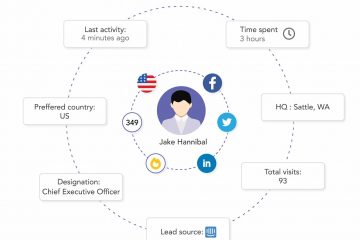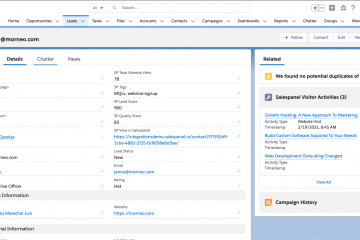On GTM, ABM and Being Emotional in the Middle of the Funnel
This article is a reflection of what we learned from our talk with Ashwin Krishna, Marketing Director of Tact.ai. Ashwin set up the demand generation engine for Tact.ai, creating a multi-million dollar pipeline that generated 60% of Tact.ai’s revenue in just 18 months. Ashwin is an award-winning marketer and has won The Most Influential Tech Marketer Award from The Economic Times and The Most Influential Marketing Leader award from World Marketing Congress. Watch the full episode here.
Key Discussions 🥡:
- Demand Capturing vs Generation
- Picking your battles wisely
- Going deeper in ABM
- Playing well in the middle: Pipeline Management
How to lay down a go-to-market strategy (GTM strategy) from scratch for early-stage startups that have found product-market fit.
Once you have figured out whether your product has a lot of digital demand or not.
-> Find out, if it’s demand generation or capturing that you need

It always helps to be more specific and more importantly systematic in execution.
And this is where it all begins
1. If it’s Demand Capturing: Even before the product is shipped out-
- you should start talking about the industry.
- Talk about the problems your personas face.
- And, produce content that acts as a solution to those problems
If you’re an SMB company, build your demand capture bucket.
2. And if it’s Demand Generation, which is more suitable for mid-market enterprises:
- Focus on accounts
- Do ‘one-to-many’ or ‘one-to-one’ outreach
- Run campaigns via Email, LinkedIn, and Phone Calls
To sum up, Demand Capture is where you do a bunch of things: Content, Search, and Community (like G2). Whilst demand generation is all about going out and doing outreach in a systematic way.
How to Fly High on Growth Hacking:

Before we begin to fly…
Growth Hacking is about being mindful of the scarcity of the resources at your disposal, i.e. People, Money, and Time, and trying to maximize output using technological solutions. And then, using tech to build a scalable model through experimentation.
Growth hacking 101- “Maximize your time. Unlock the maximum value of resources, and build a growth model which is predictable and scalable.”
Pick your battles wisely.
- Don’t do too many things at a time
- Be mindful of putting a hypothesis around your efforts
Select 2-3 things and give enough time, money, and human resources. Out of the three things:
- One will fly high and give exceptional results
- The second will be mediocre
- And the third one will not work out.
Initially, you put more fuel into experiments till that reaches a saturation point. And then you repeat!
And more importantly, remember that Growth Hacking is not about throwing everything at once at the wall to see what sticks. It’s important to build on your efforts and not indulge in sudden bursts of eureka moments.
You are not a potions master, are you?
You want to keep digging in ABM
Account-Based Marketing (ABM) is about bringing highly relevant customizations and personalized to a specific account.

Your ABM journey in four steps:
1. Identify the account: The criterion for selecting your target accounts is how deep you can dive into customization, i.e. how deep you want to customize your engagement. The deeper you go, the lesser number of accounts to focus on.
2. Research: Make specific recommendations and plans based not just on the target account, but the individuals belonging to the account. Find out:
- What are the top three priorities for the company?
- What did the CEO speak about recently?
- Which objectives can be catered to?
3. Orchestration of the ABM: Fundamentally, how do you build a multi-touch, multi-staged campaign across email, LinkedIn, and phone calls. Customize the experience if possible.
4. Tracking the progress: Some metrics you can use to track are:
- Awareness: Percentage of Accounts reached out to.
- Engagement: The depth of engagement with the Accounts
- Conversion: The ultimate matrix on which to base your ABM performance.
Being Emotional in the Middle-of-the-Funnel
An effective Pipeline connects marketing and sales efforts seamlessly while empowering people at both ends of the funnel.
For effective pipeline management:
- Design multi-step pipeline- “Define the ins and outs at every step clearly.”
- Build at the Bottom: Figure out how you build interventions in each step that will help you to increase the bottom of the funnel, i.e. lead conversions.
- Zero-in on the SLA: Build that guidebook, your Sales and Marketing Service Level Agreement (SLA) which smoothens the relationship between sales and
In the end, you don’t want to become the Icarus of marketing. You want to pick your GTM strategy carefully, take a deep dive into ABM, and learn to fly on the strong wings and winds of growth hacks.
See you in the skies…
Sell more, understand your customers’ journey for free!
Sales and Marketing teams spend millions of dollars to bring visitors to your website. But do you track your customer’s journey? Do you know who buys and why?
Around 8% of your website traffic will sign up on your lead forms. What happens to the other 92% of your traffic? Can you identify your visiting accounts? Can you engage and retarget your qualified visitors even if they are not identified?



